Easy Homemade Mustard Recipe
This homemade mustard recipe makes spicy yellow mustard to add a flavourful punch to your favorite meals.
Homemade yellow mustard is very simple to make. It’s a basic recipe and you only need a few ingredients. It needs some time to soak and cure but the end result will last for months and months!
This delicious condiment makes a great edible gift idea.
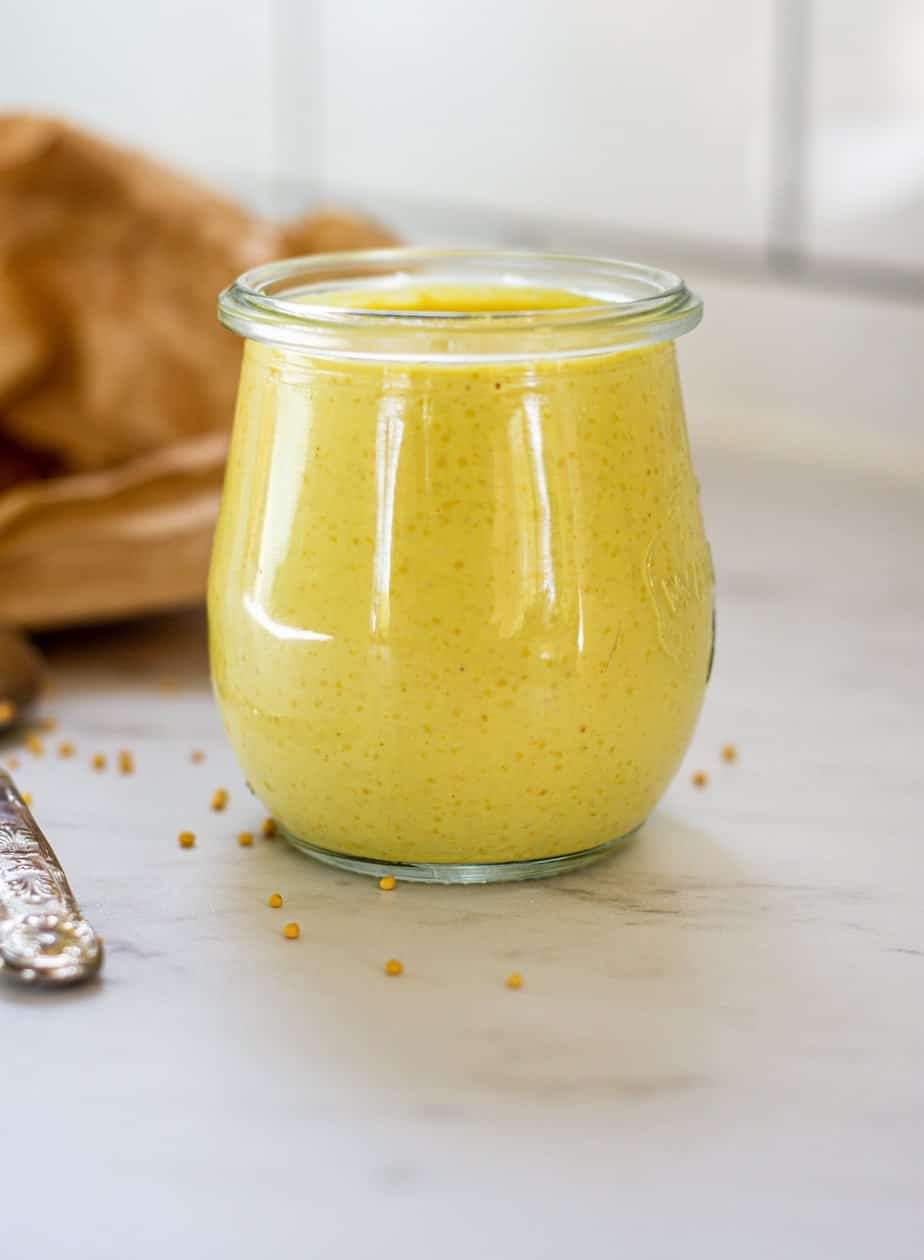
History of mustard
Mustard is one of the most widely used spices in the world and has been used for centuries. Mustard is believed to have been first cultivated in Indus valley, a bronze age civilization. It is thought that the Romans were the first to experiment with using mustard as a condiment. They mixed ground mustard seeds with grape must (the freshly crushed juice of grapes) to make ‘mustum ardens‘, known as ‘burning must.’ The first known recipe for mustard was in a Roman cookbook written in the late fourth century.
From there the Romans exported mustard to Western Europe and by the 10th century, it was used in Paris, which is where the Dijon mustard first appeared. English mustard was first documented around the 13th century.
Types of mustard seeds
This yellow mustard recipe uses yellow mustard seeds (sometimes known as white mustard seeds.) They are the mildest mustard seed out of the three types commonly used in homemade mustard. The other types are brown mustard seeds and black mustard seeds.
Mustard seeds when eaten on their own are not spicy, just very bitter. To make hot mustard and to get the spicy element of the seed, the seeds need to be crushed and react with cold water. Mixing crushed mustard seeds with water causes sets of chemical reactions between two compounds in the seed. Especially when using a cold liquid.
This reaction can be lessened when using hot water. Adding acid to the mixture helps preserve the spice in the mustard as it ages.

Whole grain mustard
This recipe for yellow mustard is blended completely and uses only yellow mustard seeds. If you want to make whole-grain mustard, you can substitute one-third of the yellow mustard seeds for brown mustard seeds, or use a variety of mustard seeds to bring different flavors.
Later when it’s time to blend the mustard, only give it a few pulses in the food processor so that most of the whole seeds remain intact.
Equipment
You will need a food processor or a blender to create smooth homemade mustard.
Ingredients
The ingredients list for this homemade mustard only consists of 4 ingredients and one optional extra. You can find the ingredient amounts in the recipe card at the bottom of this post.
- Whole mustard seeds. You can buy dry mustard seeds at your local bulk food store or grocery store, or they are easy to find online these days too.
- Apple cider vinegar. This will stabilize your mustard’s zing. You can substitute this with another vinegar such as red wine vinegar, white wine vinegar, or white vinegar.
- Water – to soak the mustard seeds and blend them into a paste
- Salt for flavor
- Ground turmeric (optional) for bright yellow color.
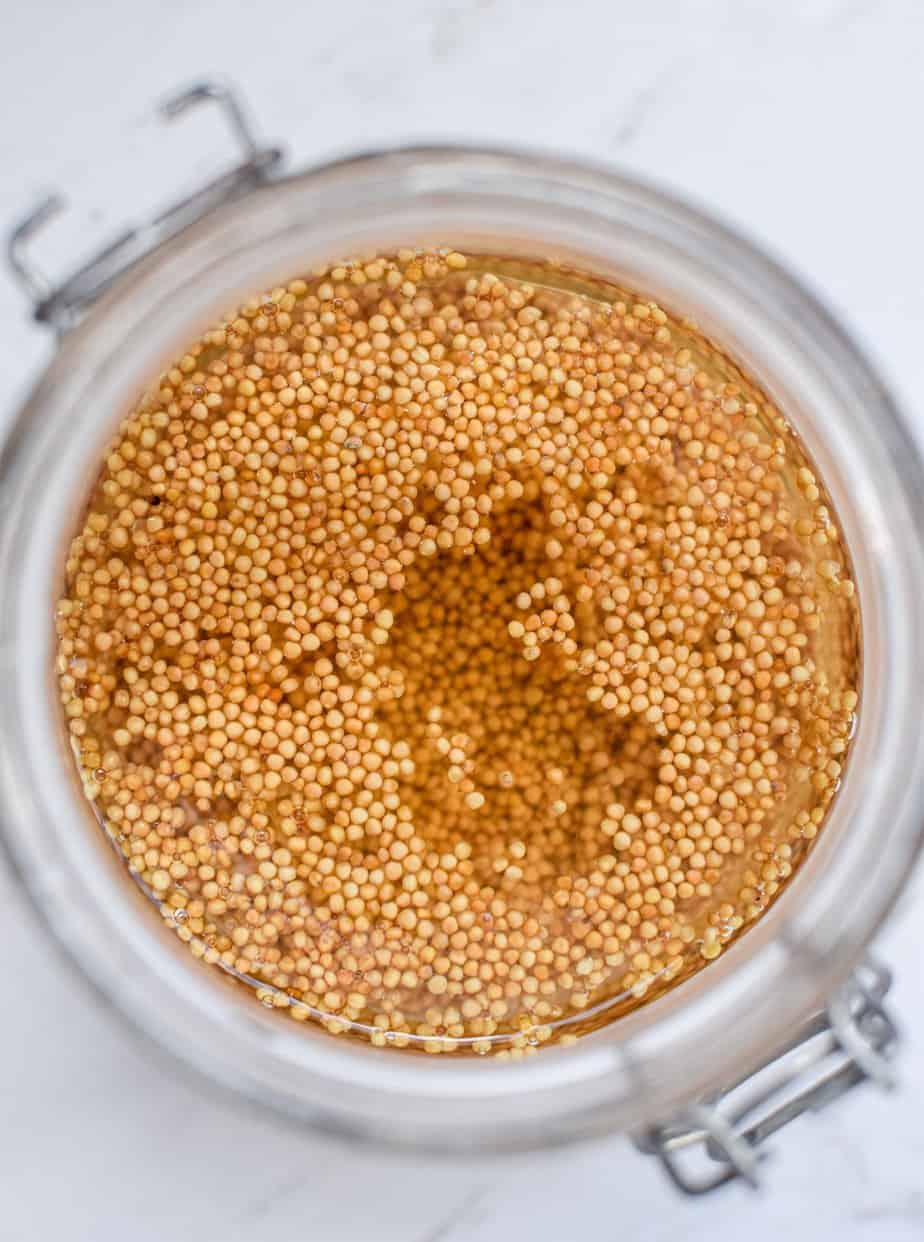
The method
Step 1 – Soak the mustard seeds in water for 5 hours, then drain them. Add them to a jar and pour over clean water and apple cider vinegar and allow them to soak for a further 24 hours. The initial soak and drain are to help remove the phytates present in all nuts and seeds and help with digestibility.
Step 2 – Strain off (but keep) ¼ of the liquid. Blend the mustard in a food processor along with some of the remaining liquid, salt, and ground turmeric until it is a smooth consistency.
Add in as much of the strained off liquid until it is your desired consistency. I prefer to have the mixture be quite runny initially as the mustard will thicken up over time. How smooth the mustard gets will depend on your blender or food processor. My mustard always has a bit of texture remaining.
Step 3 – Spoon the homemade mustard into a clean glass jar or an airtight container and let the mustard sit out at room temperature for a day before placing it in the refrigerator.
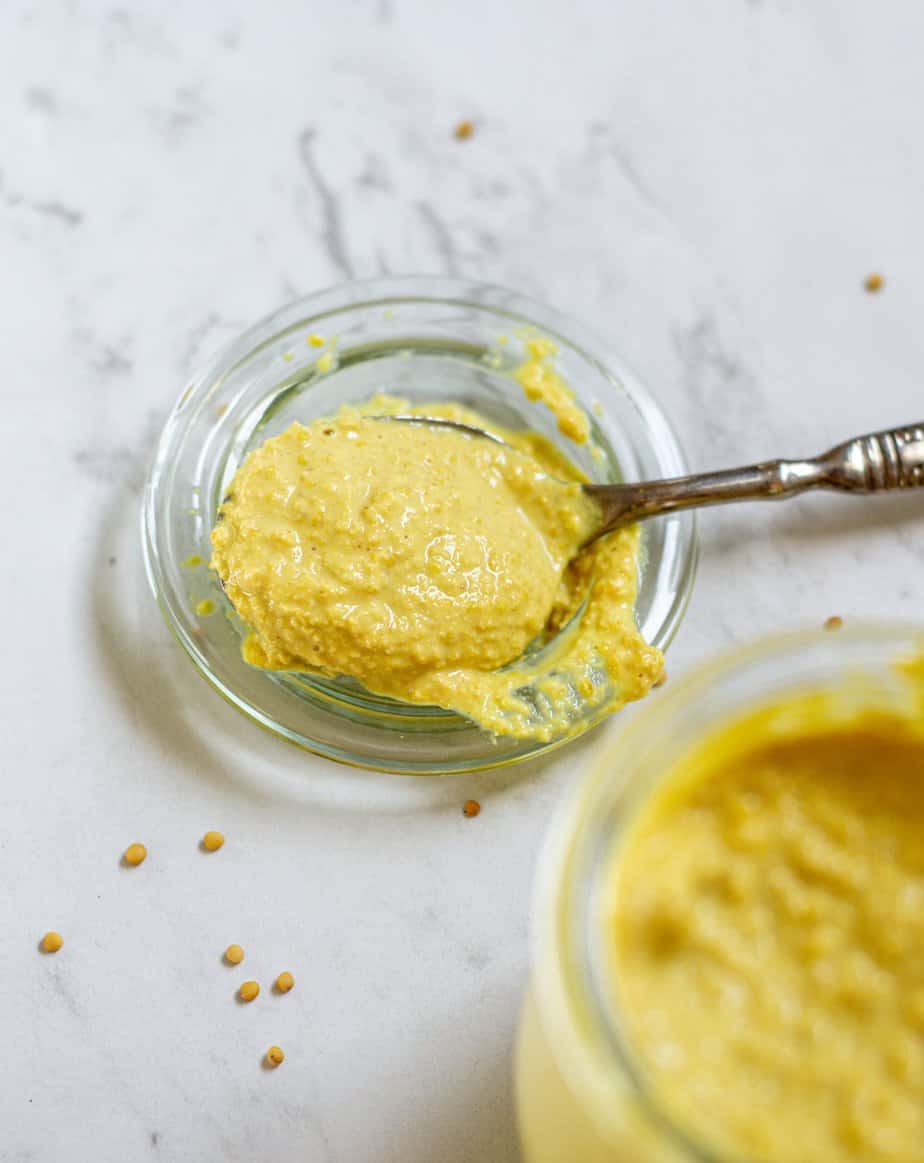
Aging and storing
When initially blended, this spicy mustard will be very bitter. As the mustard ages and sits, some of the bitterness will dissipate. The mustard can be stored in the refrigerator or at room temperature.
Mustard plants are powerful anti-microbial plants and the seeds have many antibacterial properties that allow it to store safely without refrigeration for a long time. The vinegar added to the mustard will stop it from losing its flavor and spice too quickly.
Initially, the mustard will be very spicy but over time, after it sits for a few weeks it will mellow.
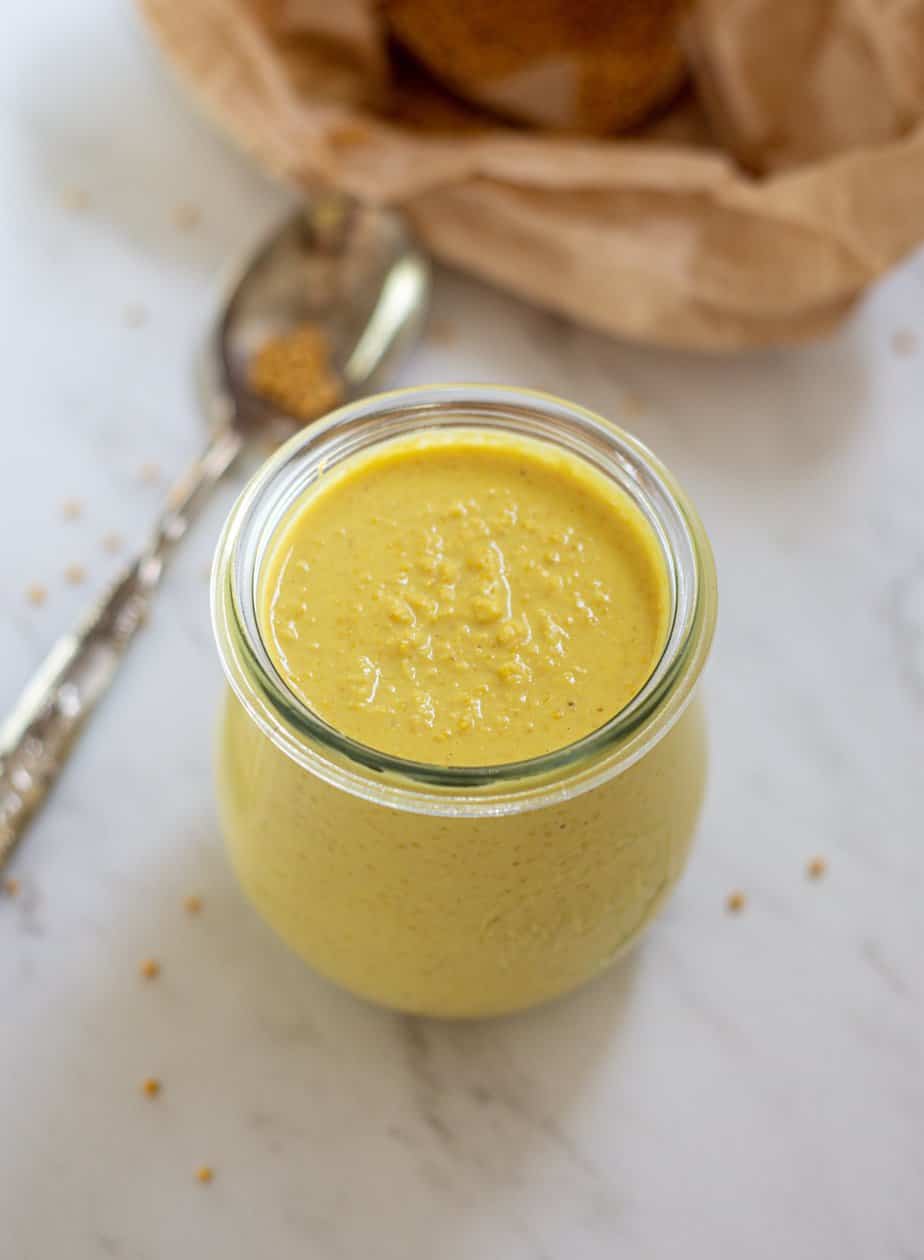
Milder mustard
If the mustard is just too spicy for your liking, you can gently warm the mustard. Heating it will cause the mustard to lose some of its spice. However, I have found that heating it sometimes keeps the bitterness in the mustard. It’s better to initially soak the mustard in hot water in the first stage.
Want to make more easy recipes for condiments? Try homemade vegan mayo!
Looking for other easy homemade recipes using jars? Check out this recipe on how to make lemon curd or this vanilla quince jelly recipe. This yogurt panna cotta recipe is a great breakfast treat to start the day with.
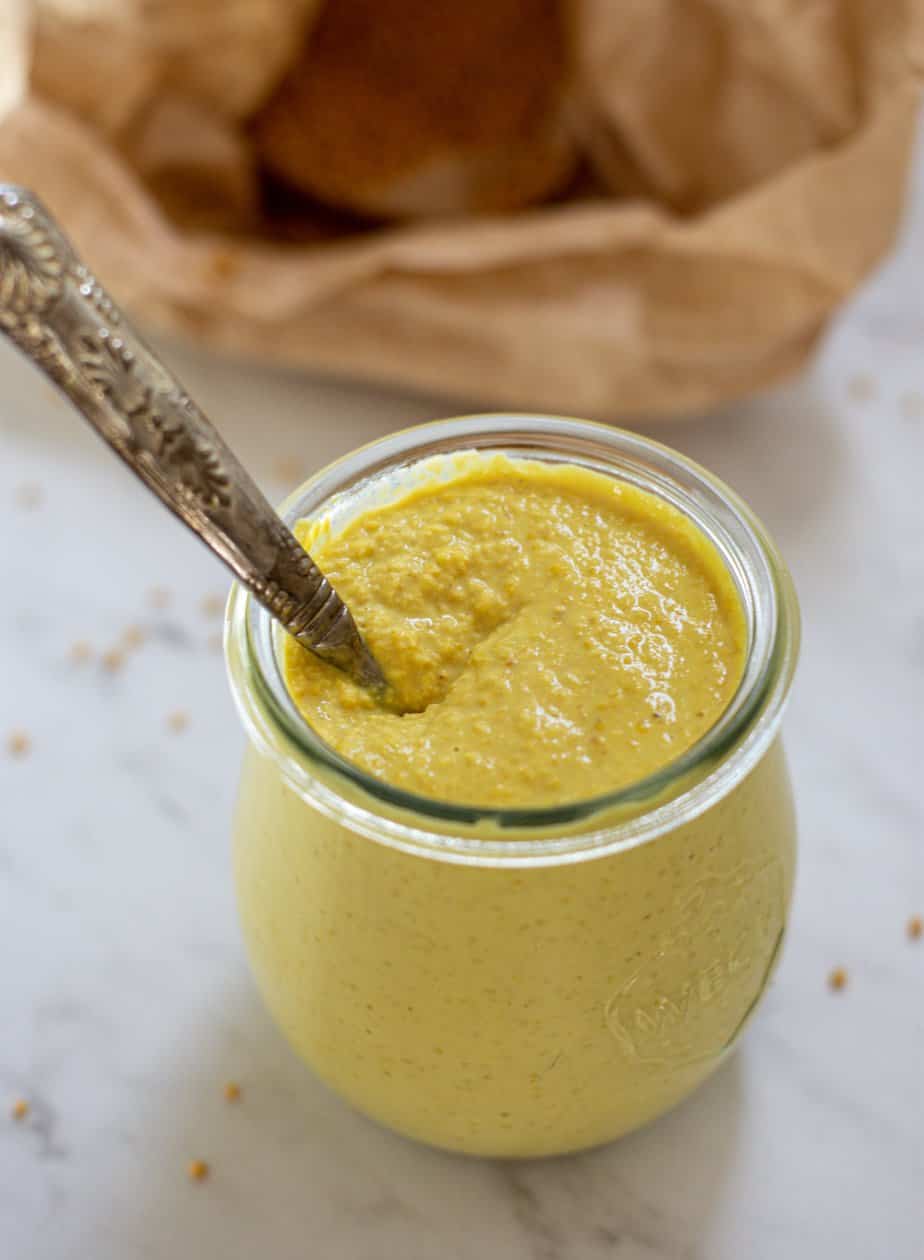

Easy Homemade Mustard Recipe
This homemade mustard recipe makes a spicy yellow mustard to add a flavourful punch to your favourite dishes.
Ingredients
- 100g yellow mustard seeds
- 240ml water (plus more for an initial soak)
- 60g apple cider vinegar
- 1 ½ tsp salt
- ½ tsp ground turmeric (optional)
Instructions
In a bowl add the mustard seeds and cover with water. Soak the mustard seeds for 5 hours, then drain them. This initial soak and drain are to help remove the phytates present in all nuts and seeds and help with digestibility.
Add the drained seeds to a clean bowl or large jar and pour over 240ml water and 60ml apple cider vinegar. Cover with a kitchen towel and allow it to soak for 24 hours.
Once soaked, strain off (but keep) ¼ of the liquid.
Blend the mustard and the remaining liquid along with the salt and ground turmeric until it is a smooth consistency, adding in as much of the strained off liquid until it is your desired consistency. Over time, mustard tends to thicken up a bit so bear this in mind.
Spoon the mustard into a clean jar with a lid on and let the mustard sit out at room temperature for at least 24 hours to help lose the mustard bitterness before placing it in the refrigerator. The mustard can also be kept at room temperature if you don't want to refrigerate it.
Initially, the mustard will be very bitter but this will lessen as it ages. Over time, some of the liquid may separate from the mustard. Simply stir it back together.
Notes
If the mustard is just too spicy for your liking, you can gently warm the mustard. Heating it will cause the mustard to lose some of its spice.
However, I have found that heating it sometimes keeps the bitterness in the mustard.
Nutrition Information:
Yield: 25 Serving Size: 1Amount Per Serving: Calories: 3Total Fat: 0gSaturated Fat: 0gTrans Fat: 0gUnsaturated Fat: 0gCholesterol: 0mgSodium: 184mgCarbohydrates: 0gFiber: 0gSugar: 0gProtein: 0g
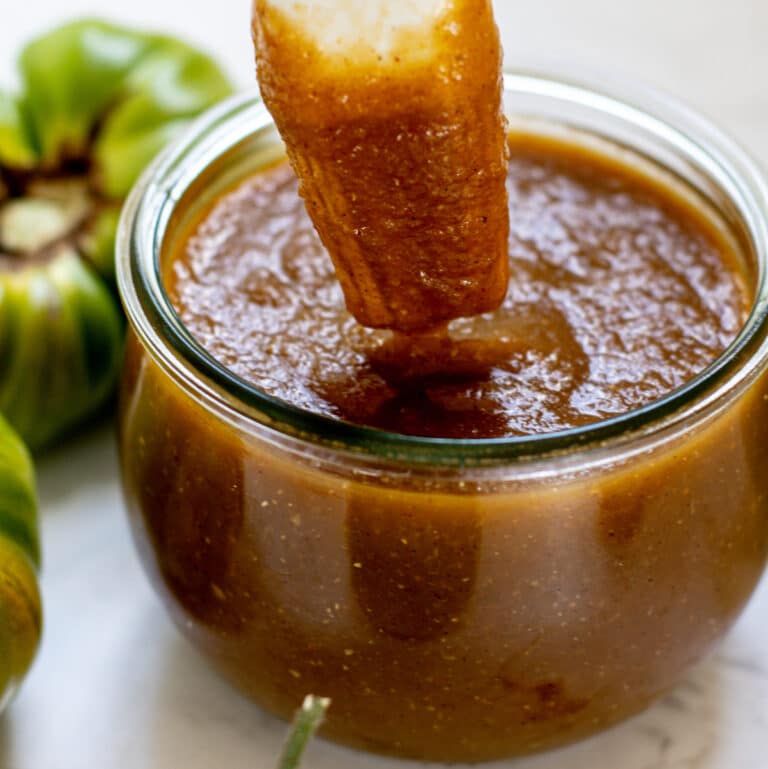

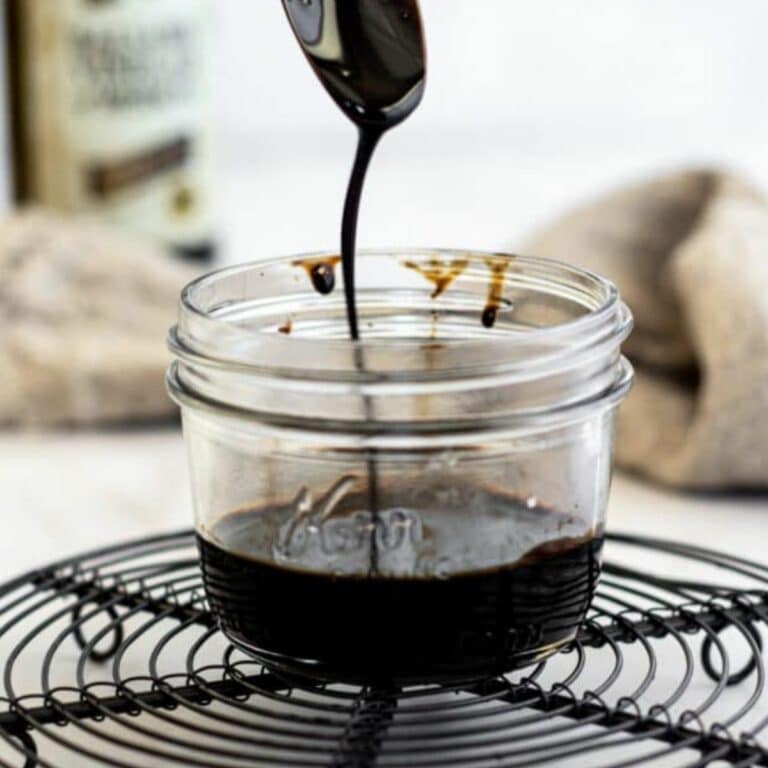
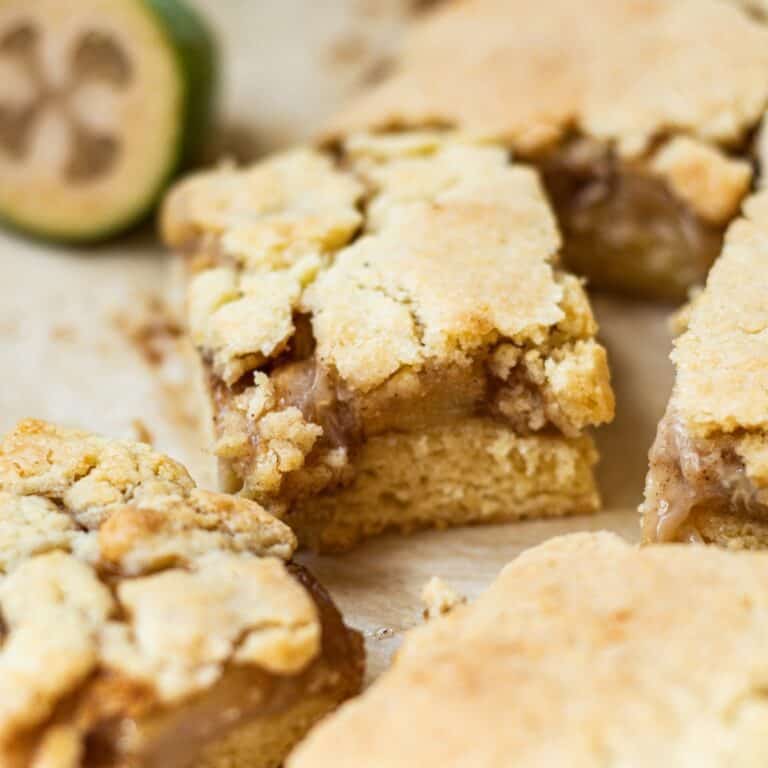


I’m just wondering if I have to completely sterilise the jar before I use it or can I just thoroughly clean with hot soapy water?
I sterilise mine 🙂